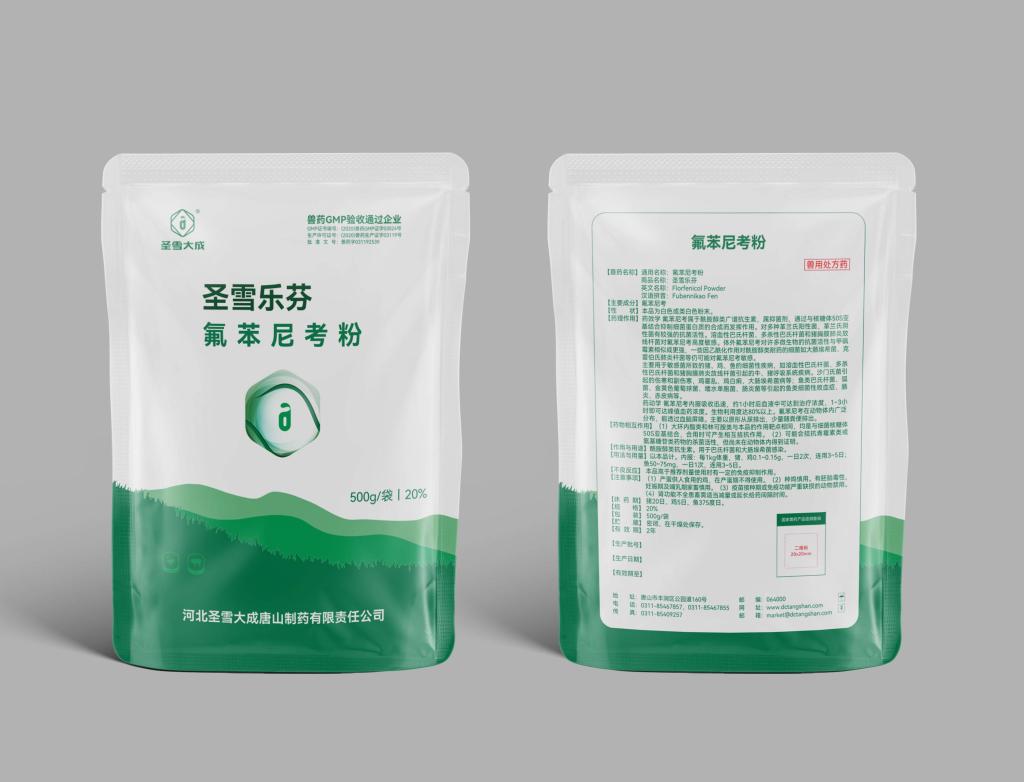
 CONTACT
CONTACT
- Linkman:Linda Yao
- Tel: +8618231198596
- Email:linda.yao@dcpharma.cn
- Linkman:CHARLES.WANG
- Department:Overseas
- Tel: 0086 0311-85537378 0086 0311-85539701
The impact of Florfenicol Powder on the environment is being studied by researchers.
TIME:2024-09-30
Florfenicol, a broad-spectrum antibiotic, is widely used in veterinary medicine to treat bacterial infections in food-producing animals. While its efficacy in controlling diseases and improving animal health is well-documented, the environmental impact of florfenicol, particularly in its powder form, is an area of growing concern. Researchers are increasingly focusing on understanding how this antibiotic affects ecosystems, soil, water, and non-target organisms. This article explores the current state of research on the environmental impact of florfenicol powder and highlights key findings and future directions.
Understanding Florfenicol
Florfenicol is a fluorinated thiamphenicol derivative that inhibits bacterial protein synthesis. It is effective against a wide range of Gram-negative and some Gram-positive bacteria, making it a valuable tool in veterinary practice. Florfenicol powder is often administered through feed or water, which can lead to the release of the antibiotic into the environment via manure, runoff, and other pathways.
Key Areas of Environmental Concern
Soil Contamination:
When manure from treated animals is applied to fields as fertilizer, florfenicol can enter the soil. Researchers are studying the persistence and degradation of florfenicol in different soil types and under various environmental conditions.
Soil microorganisms play a crucial role in nutrient cycling and ecosystem health. The presence of florfenicol can disrupt these microbial communities, potentially leading to changes in soil fertility and structure.
Water Pollution:
Runoff from agricultural fields and direct discharge from livestock facilities can introduce florfenicol into surface and groundwater. Studies are being conducted to assess the levels of florfenicol in water bodies and its potential to bioaccumulate in aquatic organisms.
The presence of antibiotics in water can contribute to the development of antibiotic-resistant bacteria, posing a risk to both human and animal health.
Impact on Non-Target Organisms:
Florfenicol's effects on non-target organisms, such as beneficial insects, plants, and aquatic life, are being investigated. Research aims to determine whether sublethal concentrations of the antibiotic can have adverse effects on the growth, reproduction, and survival of these organisms.
In aquatic environments, the impact on fish, invertebrates, and algae is of particular interest, as these organisms are at the base of many food webs.
Development of Antibiotic Resistance:
The widespread use of florfenicol can promote the development of antibiotic-resistant bacteria in the environment. These resistant strains can be transferred to humans and animals, reducing the effectiveness of antibiotics in treating infections.
Researchers are exploring the mechanisms by which resistance develops and the factors that contribute to its spread, including horizontal gene transfer and selective pressure.
Current Research Findings
Persistence and Degradation:
Studies have shown that florfenicol can persist in the environment for extended periods, with half-lives ranging from several days to months, depending on the environmental conditions.
Factors such as temperature, pH, and the presence of organic matter can influence the rate of degradation. Some studies suggest that photodegradation and biodegradation may play a role in breaking down florfenicol in the environment.
Ecotoxicity:
Ecotoxicological studies have demonstrated that florfenicol can be toxic to certain aquatic organisms at environmentally relevant concentrations. For example, it has been shown to affect the growth and survival of algae and to cause sublethal effects in fish and invertebrates.
The impact on terrestrial organisms, such as earthworms and plants, is also being studied, with some evidence suggesting that florfenicol can inhibit the growth of certain plant species.
Antibiotic Resistance Genes (ARGs):
Research has identified the presence of ARGs associated with florfenicol resistance in environmental samples, including soil, water, and manure. These genes can be harbored by various bacteria, including those that are not pathogenic but can serve as a reservoir for resistance.
The horizontal transfer of ARGs between different bacterial species is a significant concern, as it can facilitate the spread of resistance across multiple environments.
Future Directions and Mitigation Strategies
Enhanced Monitoring:
There is a need for more comprehensive monitoring programs to track the levels of florfenicol and other antibiotics in the environment. This includes the development of sensitive and cost-effective analytical methods to detect low concentrations of these compounds.
Long-term monitoring will help to identify trends and hotspots of contamination, guiding targeted interventions and policy decisions.
Improved Waste Management:
Improving manure management practices, such as composting and anaerobic digestion, can reduce the amount of florfenicol entering the environment. These processes can help to degrade the antibiotic and reduce its bioavailability.
Implementing buffer zones and best management practices (BMPs) in agriculture can minimize the runoff of antibiotics into water bodies.
Alternative Therapies and Practices:
Encouraging the use of alternative therapies, such as vaccines, probiotics, and phytobiotics, can reduce the reliance on antibiotics like florfenicol.
Promoting good husbandry practices, such as improved hygiene, biosecurity, and nutrition, can prevent the occurrence of infections and the need for antibiotic treatments.
Regulatory and Policy Measures:
Strengthening regulations on the use of antibiotics in agriculture, including florfenicol, can help to mitigate environmental impacts. This includes setting limits on the amounts of antibiotics that can be used and establishing guidelines for their disposal.
International cooperation and the harmonization of standards can ensure a consistent approach to addressing the global issue of antibiotic pollution.
Conclusion
The environmental impact of florfenicol powder is a complex and multifaceted issue that requires a coordinated and multidisciplinary approach. Ongoing research is shedding light on the persistence, ecotoxicity, and resistance implications of this antibiotic in the environment. By implementing enhanced monitoring, improved waste management, and promoting alternative therapies and practices, we can work towards minimizing the environmental footprint of florfenicol. Additionally, robust regulatory and policy measures are essential to guide responsible use and protect the environment for future generations. Through these efforts, we can balance the benefits of using florfenicol in veterinary medicine with the need to safeguard our natural resources and public health.
- Tel:+8618231198596
- Whatsapp:18231198596
- Chat With Skype







